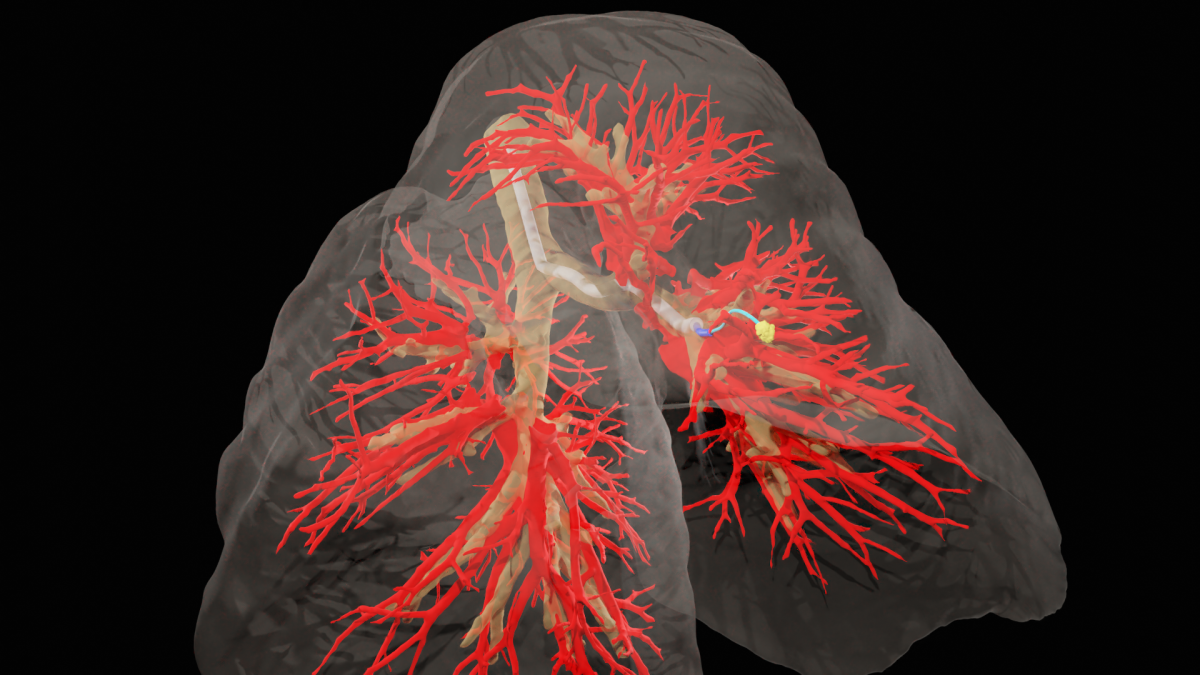Medical robot steers needle through living lung
Using robotics and AI, a Carolina team developed an autonomous tool that performs with “unprecedented accuracy and safety.”

A team of researchers and physicians from UNC-Chapel Hill has demonstrated, for the first time, a robotic steerable needle capable of autonomously maneuvering through living tissue to reach a target while avoiding anatomical obstacles. The team published this milestone result in Science Robotics, the most prestigious journal covering robotics research.
“Commercial medical robots sold today are typically teleoperated, meaning a human is always directly controlling every motion,” said Ron Alterovitz, professor in the College of Arts and Sciences’ computer science department and the project’s principal investigator. “By leveraging the power of robotics and AI, we developed a robot capable of autonomously steering needles to targets in living tissue with unprecedented accuracy and safety.”
An autonomous medical robotic needle could be used to facilitate safer, more accurate procedures throughout the body including biopsies, directed drug delivery and localized radiation cancer treatment. Needles are a fundamental tool for such procedures because they are minimally invasive, which reduces the patient’s pain and recovery time.
Developing the autonomous robotic steerable needle is a multidisciplinary effort by computer scientists, engineers and physicians. In addition to Alterovitz, the team at Carolina includes UNC School of Medicine’s Dr. Jason Akulian, with expertise in interventional pulmonology, and Dr. Yueh Z. Lee, with expertise in radiology. Contributing engineering expertise are team members Robert J. Webster III at Vanderbilt University and Alan Kuntz, a former Carolina graduate student who is now on the faculty of the University of Utah.
The research team successfully demonstrated this novel robot in one of the most challenging organs: the breathing lung. Unlike other organs, the lungs are constantly expanding and contracting in the chest cavity. According to Akulian, it’s like shooting at a moving target.
“This technology allows us to reach targets we can’t otherwise reach with a standard or even robotic bronchoscope,” said Akulian, the paper’s co-author.
The steerable needle must navigate around anatomical obstacles to reach a nodule in the lung. To drive through tissue, the needle needs to know where it is going. The research team used CT scans of the subject’s thoracic cavity to create three-dimensional models of the lung, including the airways, blood vessels and the chosen target. Using this 3-D model, their AI-driven software instructs it to automatically travel from one point to another while avoiding important structures.
“The autonomous steerable needle we’ve developed is highly compact, but the system is packed with a suite of technologies that allow the needle to navigate autonomously in real-time,” said Alterovitz. “It’s akin to a self-driving car, but it navigates through lung tissue, avoiding obstacles like significant blood vessels as it travels to its destination.”
The team plans to continue to work to bring robotic steerable needles closer to clinical use in humans by refining the system and providing further guarantees on performance in challenging cases, while also exploring new applications. “While there’s still a lot of work to be done, I’m very excited about continuing to push the boundaries of what we can do for patients,” said Akulian.
Professor Alterovitz added, “We plan to continue creating new autonomous medical robots that combine the strengths of robotics and AI to improve medical outcomes for patients facing a variety of health challenges while providing guarantees on patient safety.”







